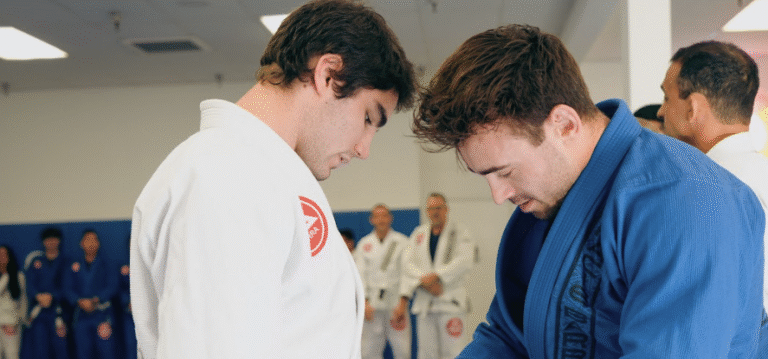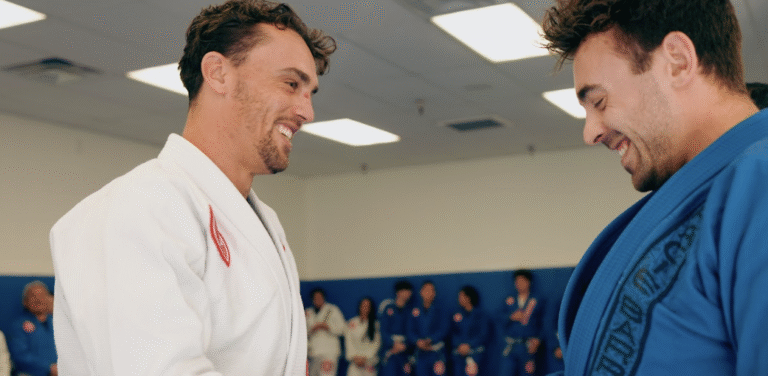How Long Does it Take to Get a Blue Belt in BJJ?
The journey to a blue belt is the first major milestone for any Brazilian Jiu-Jitsu (BJJ) practitioner. It represents a transition from a complete beginner to a competent grappler with a solid understanding of the art’s foundational principles.
While there is no fixed timeline, the average time it takes to earn a blue belt for a dedicated student is typically 1 to 3 years.
However, this timeline can vary significantly based on a number of key factors. It’s a journey that is more about consistency and technical understanding than it is about a fixed number of hours on the mat.
Key Factors That Influence the Timeline
The time it takes to get a blue belt is not uniform across all practitioners. The following factors play a significant role:
- Training Frequency and Consistency
This is arguably the most important factor.
High Frequency (4-5+ times per week): A student training this frequently, with a high degree of consistency, can potentially achieve a blue belt in 1 to 1.5 years. The constant exposure to techniques, drilling, and sparring accelerates the learning process.
Average Frequency (2-3 times per week): This is the most common path. A student training 2-3 times per week can expect to earn their blue belt in 2 to 3 years.
Low Frequency (1 time per week): A student who trains only once a week will have a much longer journey. It may take 4 years or more to reach the necessary skill level.
- A Student’s Athletic and Martial Arts Background
A student’s prior experience can be a major accelerator.
Athletic Background: Individuals with a background in wrestling, judo, gymnastics, or other combat sports often have a higher level of body awareness, coordination, and physical fitness. These athletes may have a faster learning curve and can earn their blue belt in a shorter amount of time.
No Prior Experience: A person with no athletic or martial arts background will typically take longer to grasp the foundational movements and concepts. This is normal and the structured curriculum of BJJ is designed to build these skills from the ground up.
- The Quality of Instruction and School Philosophy
The academy you choose and the philosophy of its instructors can also play a role.
Structured Curriculum: Academies with a clear, structured curriculum (like Gracie Barra) are often designed to guide students through a systematic progression of techniques, which can lead to a more efficient and predictable timeline.
Belt Promotion Philosophy: Some schools have a more traditional, longer-term approach to belt promotions, while others may promote more quickly based on a student’s technical proficiency and dedication.
- Technical and Conceptual Understanding
A blue belt is not just about physical ability; it’s about a fundamental understanding of BJJ. The promotion is not a gift, but a recognition that a student has:
Mastered the Fundamentals: A blue belt should have a solid foundation in the core techniques, including positional escapes, basic submissions, and takedown defense. They should not be a “danger” to their training partners.
Developed Positional Awareness: They should understand the importance of position over submission and be able to navigate the core positions of BJJ (e.g., closed guard, mount, side control) with a degree of competence.
The Ability to Learn Independently: A blue belt is expected to be able to learn from an instructor’s demonstration and integrate new techniques into their game with a degree of success.
The Journey to Blue Belt: What to Expect
The journey to a blue belt is a transformative one. It’s not just about learning techniques, but about a comprehensive process of personal growth.
The White Belt Experience: The white belt phase is often the most physically and mentally challenging. Students are learning to fall safely, manage their breathing, and endure the physical pressure of sparring. It is a period of rapid learning and a great deal of humility.
The Blue Belt: The blue belt signifies that a student is no longer a beginner. They are a competent grappler who can defend themselves and understand the principles of BJJ. They are now expected to be a positive influence on newer students and to continue their journey of learning with a more advanced understanding.
Conclusion: Focus on the Journey, Not the Destination
While it’s natural to wonder about the timeline, the best advice for any BJJ student is to focus on the journey, not the destination. The belt is a byproduct of consistent effort, discipline, and a genuine passion for the art. The true value of BJJ is not in the color of your belt, but in the physical and mental transformation you undergo along the way.
How Long Does it Take to Get a Blue Belt in BJJ?
Gracie Barra Northridge Brazilian Jiu-Jitsu & Self Defense
Phone: (818) 357-4074Email: info@gbnorthridge.com
URL: https://gbnorthridge.com/
| Monday | 12:00 PM - 9:00 PM |
| Tuesday | 12:00 PM - 9:00 PM |
| Wednesday | 12:00 PM - 9:00 PM |
| Thursday | 12:00 PM - 9:00 PM |
| Friday | 12:00 PM - 7:00 PM |
| Saturday | 9:00 AM - 2:00 PM |
| Sunday | Closed |








